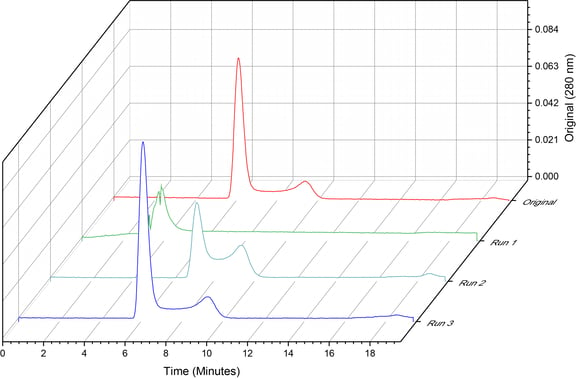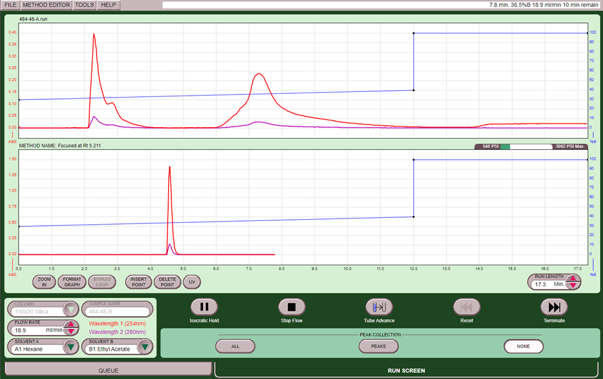 Normal phase separations using silica columns are common in flash separations, but the columns are traditionally one-time use and are used with a single solvent system. As more users are performing normal phase separations on reusable prep HPLC silica columns, I wanted to investigate the effect of jumping between some common normal phase mobile phase conditions and its effect on performance.
Normal phase separations using silica columns are common in flash separations, but the columns are traditionally one-time use and are used with a single solvent system. As more users are performing normal phase separations on reusable prep HPLC silica columns, I wanted to investigate the effect of jumping between some common normal phase mobile phase conditions and its effect on performance.
Since RediSep Prep HPLC columns are reusable when reasonable care is taken, proper sample preparation is critical. Prior to injection, samples should be filtered to prevent insoluble material from clogging the column frit and to reduce wear on the injector seals. Very crude samples should be cleaned up prior to injection so that nothing is permanently stuck on the silica. See our previous blog post about other ways to extend the life of your prep columns.
Silica behaves differently from bonded phases as the surface is more adsorptive and is more easily modified by the solvents in a manner that bonded phases, such as C18, C8, and others are not. As an example, it is commonly noted that solvents such as ethyl acetate and dichloromethane generate heat during equilibration, that is, the heat of adsorption onto the silica surface. The heat released is proportional to how strongly the compound is adsorbed onto the surface of the silica.
In general, more polar solvents adsorb more strongly to silica, which means it is easy to re-use a column previously run in hexane/ethyl acetate with dichloromethane/methanol, but difficult to go in the opposite direction. Our experience is that it takes at least three runs like those shown below to obtain the same retention using hexane/ethyl acetate after a column was run with dichloromethane/methanol. The time and solvent needed to change back to a lower-polarity solvent in silica suggests it is better to dedicate silica columns to particular solvent systems.

In a more extreme scenario as is the case if the column were run as HILIC (Hydrophilic Interaction LIquid Chromatography), using water in its mobile phase, it would take a much longer wash to return to the initial chromatogram. This is illustrated in the example below where the RediSep Prep silica column used in the reference chromatogram was used as a HILIC column. After five runs, neither peak had good shape, nor the expected retention calculated from the Focused Gradient Generator. The second eluting peak in the reference chromatogram was expected to elute with ~80% ethyl acetate using the Focused Gradient Generator. The run at the bottom of the screen, run with a column dedicated to hexane/ethyl acetate, showed good peak shape and the expected retention time for the first eluting peak.

To avoid issues associated with changing the mobile phase, it is best to dedicate each silica column to a particular solvent system. This includes solvent modifiers, such as triethylamine since they are usually very polar and are commonly used to deactivate silica for flash separations. Switching solvent systems on silica also affects the Focused Gradient Generator, since it is possible to run a scouting run on one column, and a preparative run on a different column. As strong solvents tend to deactivate the silica, the retention times for a compound could be very different than expected.
What has your experience been like using silica prep HPLC columns? How often do you use normal-phase prep HPLC? What other problems have you encountered and how did you solve them? Please use the Submit Feedback button to let us know your thoughts, questions, or comments.
For more information on TLC or our Chromatography products, visit https://www.teledyneisco.com/chromatography or contact us
